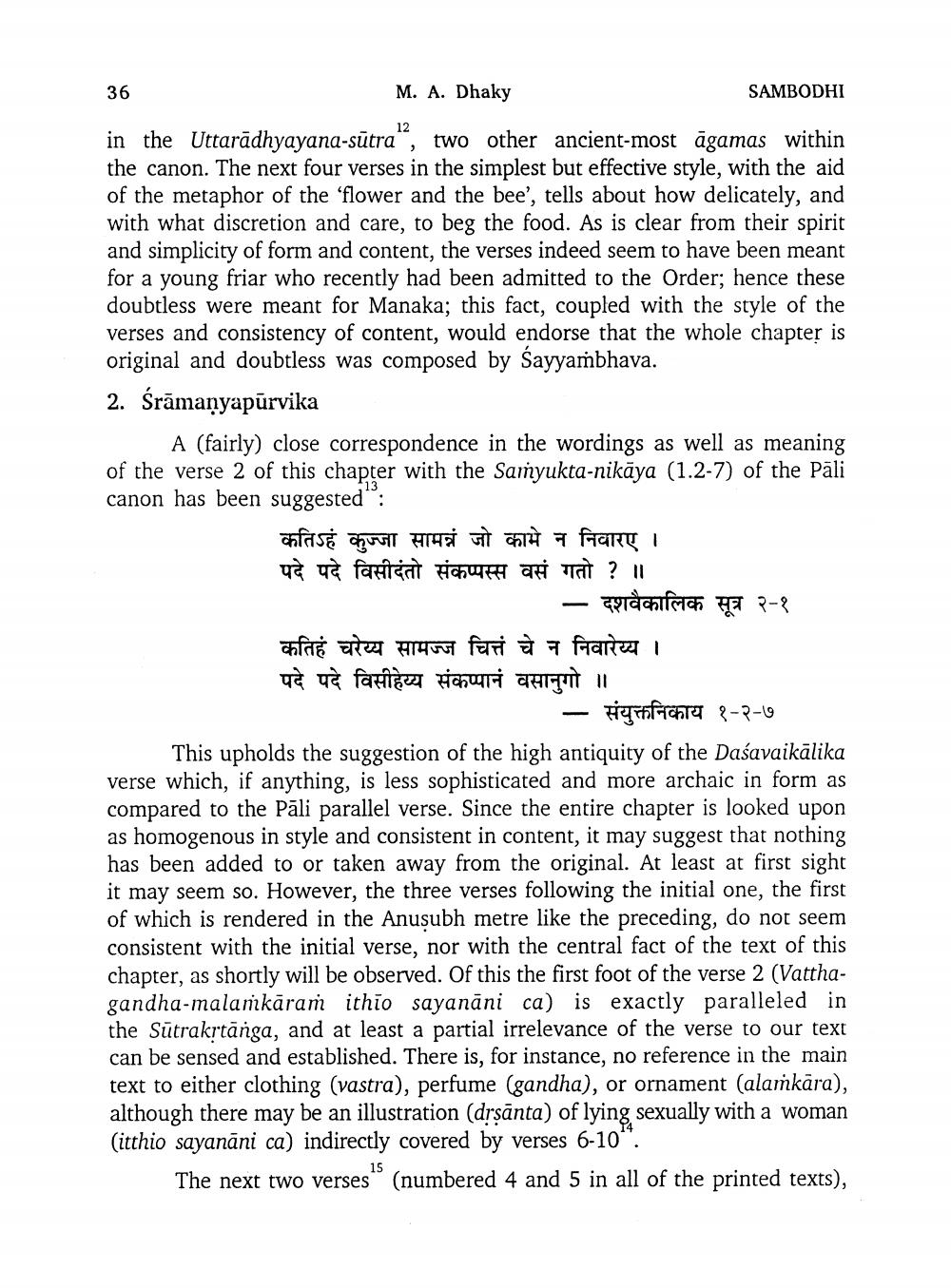________________
36
M. A. Dhaky
SAMBODHI 12 in the Uttarādhyayana-sūtra, two other ancient-most āgamas within the canon. The next four verses in the simplest but effective style, with the aid of the metaphor of the 'flower and the bee', tells about how delicately, and with what discretion and care, to beg the food. As is clear from their spirit and simplicity of form and content, the verses indeed seem to have been meant for a young friar who recently had been admitted to the Order; hence these doubtless were meant for Manaka; this fact, coupled with the style of the verses and consistency of content, would endorse that the whole chapter is original and doubtless was composed by Sayyambhava.
2. Srāmaṇyapūrvika
A (fairly) close correspondence in the wordings as well as meaning of the verse 2 of this chapter with the Samyukta-nikāya (1.2-7) of the Pāli canon has been suggest
कतिऽहं कुज्जा सामन्नं जो कामे न निवारए । पदे पदे विसीदंतो संकप्पस्स वसं गतो ? ॥
- pacalftah Et p-8 कतिहं चरेय्य सामज्ज चित्तं चे न निवारेय्य । पदे पदे विसीहेय्य संकप्पानं वसानुगो ॥
- Filmfronte 2-2-19 This upholds the suggestion of the high antiquity of the Daśavaikālika verse which, if anything, is less sophisticated and more archaic in form as compared to the Pāli parallel verse. Since the entire chapter is looked upon as homogenous in style and consistent in content, it may suggest that nothing has been added to or taken away from the original. At least at first sight it may seem so. However, the three verses following the initial one, the first of which is rendered in the Anusubh metre like the preceding, do not seem consistent with the initial verse, nor with the central fact of the text of this chapter, as shortly will be observed. Of this the first foot of the verse 2 (Vatthagandha-malankāram ithio sayanānica) is exactly paralleled in the Sūtrakrtānga, and at least a partial irrelevance of the verse to our text can be sensed and established. There is, for instance, no reference in the main text to either clothing (vastra), perfume (gandha), or ornament (alamkāra), although there may be an illustration (drsānta) of lyin exually with a woman (itthio sayanāni ca) indirectly covered by verses 6-10".
The next two verses" (numbered 4 and 5 in all of the printed texts),




